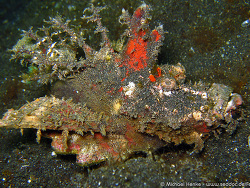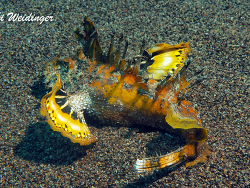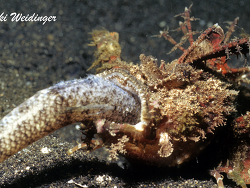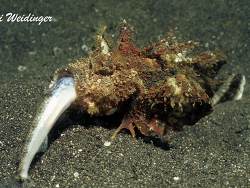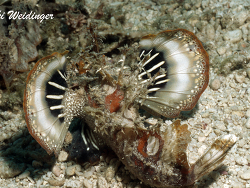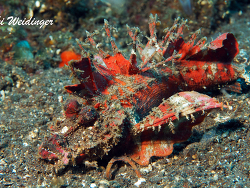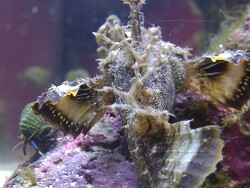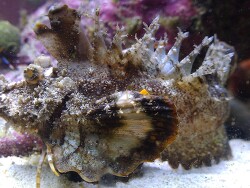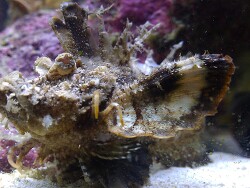Info
Found on open sandy or silty substrates of lagoon and seaward reefs. Often buries itself and easily overlooked. Uses pectoral fins to startle predators and shows color during courtship. Feeds on small fishes and crustaceans. DANGER: The venom of this fish can be deadly to man.
Synonym:
Inimicus Jordan & Starks, 1904
Classification: Biota > Animalia (Kingdom) > Chordata (Phylum) > Vertebrata (Subphylum) > Gnathostomata (Superclass) > Pisces (Superclass) > Actinopterygii (Class) > Scorpaeniformes (Order) > Scorpaenoidei (Suborder) > Synanceiidae (Family) > Choridactylinae (Subfamily) > Inimicus (Genus) > Inimicus didactylus (Species







 Johnny Braun, Luxemburg
Johnny Braun, Luxemburg












